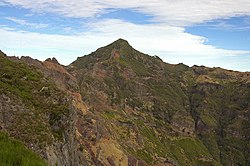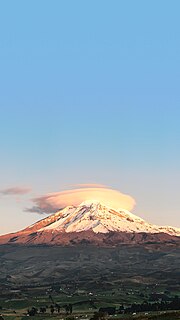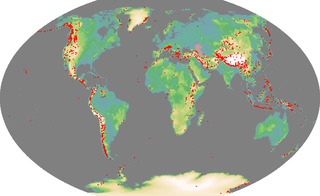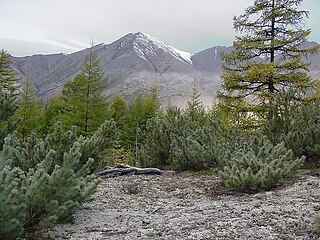This is a list of the mountains in Portugal, including the mountains with more than 1400 meters of elevation and with, at least, 100 meters of topographic prominence.
Mountains and hills occupy most of the territory of Portugal. The highest Portuguese mountain is Mount Pico in the Azores islands, with 2,351 metres (7,713 ft). The highest peak in Mainland Portugal is Torre in the Serra da Estrela range, with 1,993 metres (6,539 ft).
Historically, during most of the 20th century, the Mount Tatamailau, in the former Portuguese Timor, with 2,986 metres (9,797 ft), was the highest Portuguese mountain. [1]



| Name | Mountain range | Elevation (m) |
|---|---|---|
| Pico | Pico Island, Azores | 2,351 metres (7,713 ft) |
| Torre | Serra da Estrela | 1,993 metres (6,539 ft) |
| Pico Ruivo | Madeira Island | 1,861 metres (6,106 ft) |
| Pico das Torres | Madeira Island | 1,851 metres (6,073 ft) |
| Pico do Arieiro | Madeira Island | 1,818 metres (5,965 ft) |
| Cidrão | Madeira Island | 1,802 metres (5,912 ft) |
| Cedro | Madeira Island | 1,759 metres (5,771 ft) |
| Alto da Pedrice / Poio da Cabeça | Serra da Estrela | 1,758 metres (5,768 ft) |
| Casado | Madeira Island | 1,725 metres (5,659 ft) |
| Poios Brancos | Serra da Estrela | 1,704 metres (5,591 ft) |
| Santinha | Serra da Estrela | 1,595 metres (5,233 ft) |
| Nevosa | Serra do Gerês | 1,548 metres (5,079 ft) |
| Larouco | Serra do Larouco | 1,536 metres (5,039 ft) |
| São Bento | Serra da Estrela | 1,530 metres (5,020 ft) |
| Taloeiros / Cabeço dos Pinheiros | Serra da Estrela | 1,517 metres (4,977 ft) |
| Lombada Grande | Serra de Montesinho | 1,486 metres (4,875 ft) |
| Outeiro do Pássaro / Coções do Concelinho | Serra do Gerês | 1,482 metres (4,862 ft) |
| Alto da Amoreira / Laje do Sino | Serra do Gerês | 1,463 metres (4,800 ft) |
| Fonte Fria | Serra do Gerês | 1,458 metres (4,783 ft) |
| Borrageiro | Serra do Gerês | 1,430 metres (4,690 ft) |
| Alto de Candal | Serra do Gerês | 1,423 metres (4,669 ft) |
| Cebola | Serra do Açor | 1,418 metres (4,652 ft) |
| Pedrada | Serra do Soajo | 1,416 metres (4,646 ft) |
| Marão | Serra do Marão | 1,416 metres (4,646 ft) |
| Rochão | Serra do Gerês | 1,401 metres (4,596 ft) |







